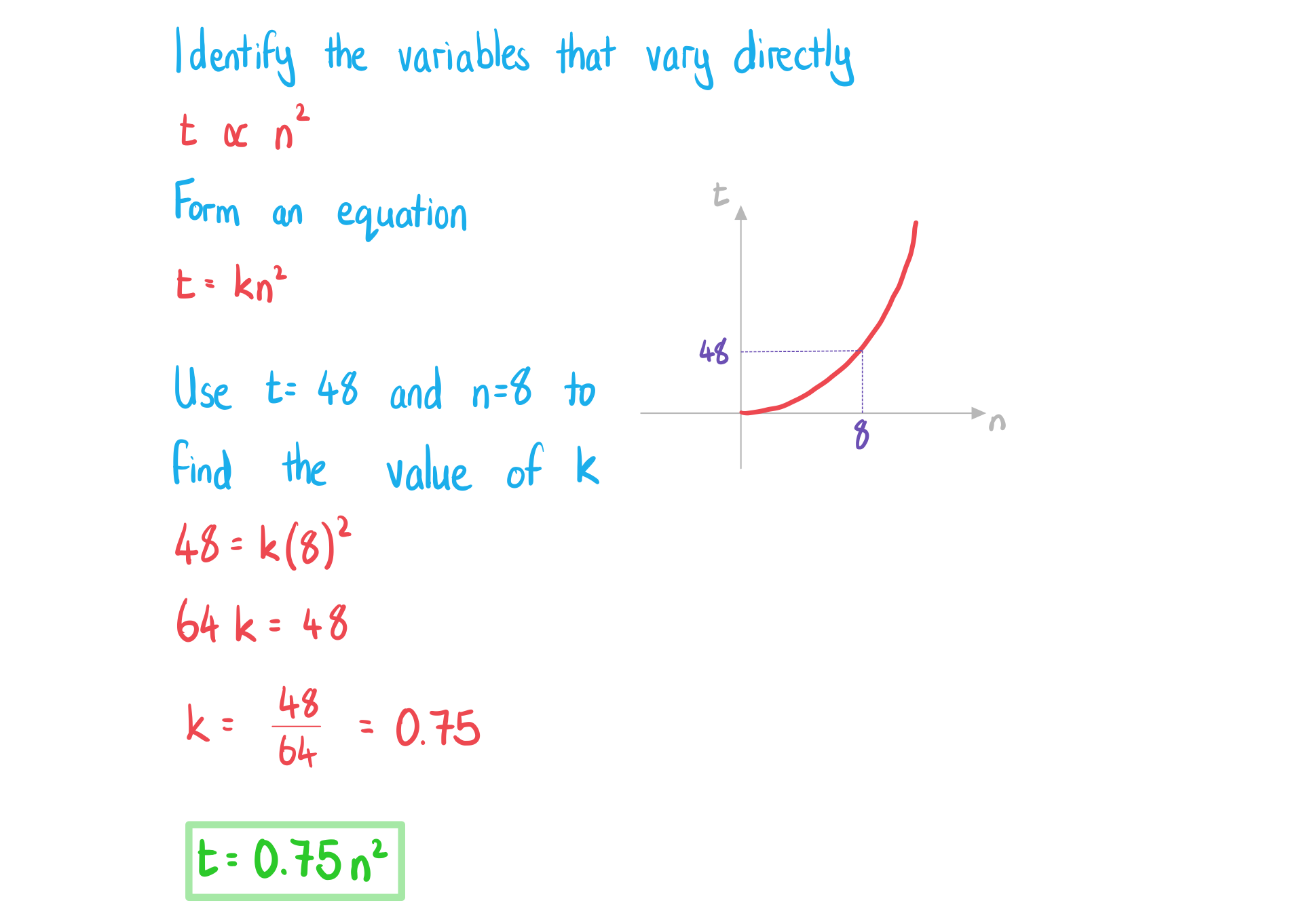Direct & Inverse Variation (DP IB Applications & Interpretation (AI)): Revision Note
Did this video help you?
Direct variation
What is direct variation?
Two variables are said to vary directly if their ratio is constant (k)
This is also called direct proportion
If
and
(for positive integer n) vary directly then:
It is denoted as
for some constant k
This can be written as
The graphs of these models always start at the origin
How do I find the equation of a direct variation model?
Identify which two variables vary directly
It might not be
and
It could be
and
Use the given information to find their constant ratio k
Also called constant of proportionality
Substitute the given values of
and
into your formula
Solve to find k
Write the equation which models their relationship
You can then use the equation to solve problems
Worked Example
A computer program sorts a list of numbers into ascending order. The time it takes, milliseconds, varies directly with the square of the number of items,
, in the list. The computer program takes 48 milliseconds to order a list with 8 items.
a) Find an equation connecting and
.
Answer:

b) Find the time it takes to order a list of 50 numbers.
Answer:

Did this video help you?
Inverse variation
What is inverse variation?
Two variables are said to vary inversely if their product is constant (k)
This is also called inverse proportion
If
and
(for positive integer n) vary inversely then:
It is denoted
for some constant k
This can be written
The graphs of these models all have a vertical asymptote at the y-axis
This means that as
gets closer to 0 the absolute value of
gets further away from 0
can never equal 0
The graphs of these models all have a horizontal asymptote at the x-axis
This means that as
gets large
gets closer to 0
can never equal 0
How do I find the equation of an inverse variation model?
Identify which two variables vary inversely
It might not be
and
It could be
and
Use the given information to find their constant product k
Also called constant of proportionality
Substitute the given values of
and
into your formula
Solve to find k
Write the equation which models their relationship
You can then use the equation to solve problems
Examiner Tips and Tricks
Reciprocal graphs generally have two parts/curves
Only one – usually the positive – may be relevant to the model
Think about why x/t/θ can only take positive values - refer to the context of the question
Worked Example
The time, hours, it takes to complete a project varies inversely to the number of people working on it,
. If 4 people work on the project it takes 70 hours to complete.
a) Write an equation connecting and
.
Answer:

b) Given that the project needs to be completed within 18 hours, find the minimum number of people needed to work on it.
Answer:


Unlock more, it's free!
Did this page help you?